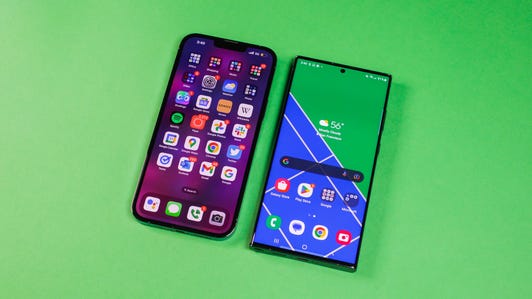Technologies
iPhone 14 Pro vs. Galaxy S23 Ultra: My Thoughts As An Ex-Android Lover
Do I regret switching to Apple?
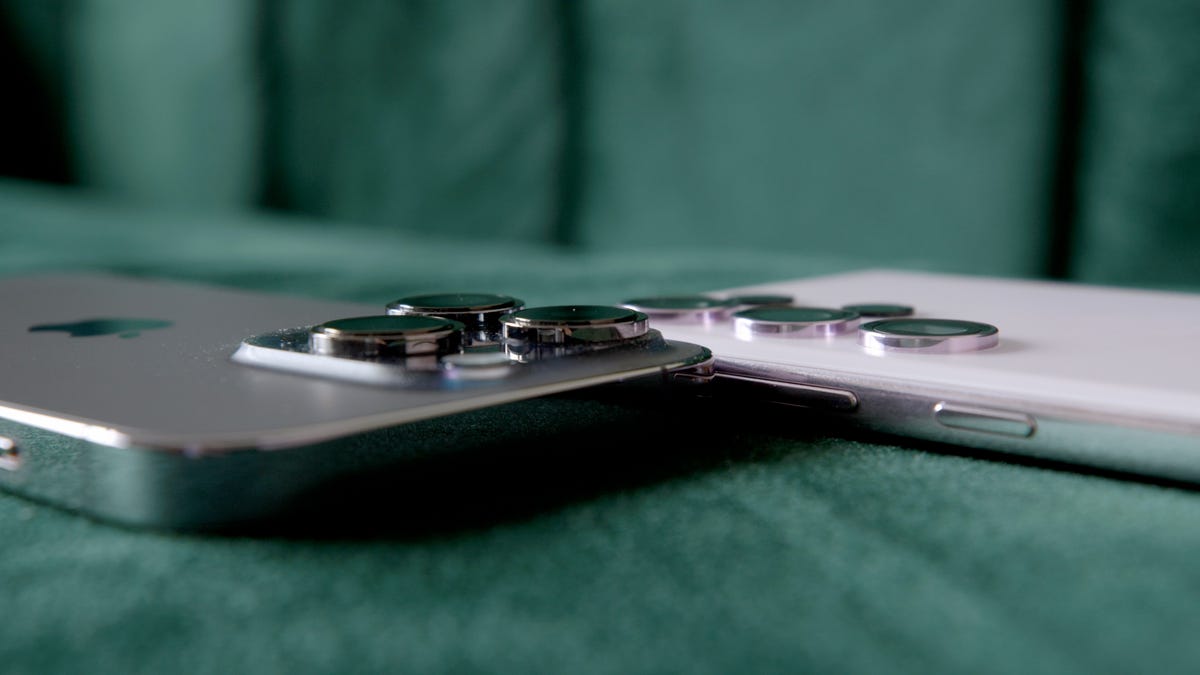
This story is part of Samsung Event, CNET’s collection of news, tips and advice around Samsung’s most popular products.
Five months ago, I went from being a die-hard Samsung Galaxy fan to a sellout iPhone owner. Since then, I’ve fully adapted to the world of Apple and have been basking in the perks of features like AirDrop and iMessage (mostly to the delight of my friends, who were sick of my green texts).
But I still have a soft spot for Galaxy phones, and when Samsung unveiled the S23 lineup in February, I was eager to see how the top-of-the-line S23 Ultra would compare to my iPhone 14 Pro. So I got my hands on one and began using the phones side by side to compare everything from the cameras to battery life to overall design — and to see whether I’d have any regrets about switching to the «dark side.» Here’s what I found.
The Galaxy S23 Ultra’s display vs. Apple’s Super Retina screen
First things first: I have an iPhone 14 Pro, and not a Pro Max, so the Ultra’s massive screen definitely stands out in comparison. I never feel like I need a bigger screen than what I get on my 14 Pro, but it definitely doesn’t hurt to have that larger display when I’m watching a YouTube video or streaming a show — or spending too much time on TikTok.
The trade-off to having that larger screen is trying to fit it in my pocket and having to carry something a bit bulkier. Still, it’s a pretty sleek phone for all that real estate.
The display quality on both phones is stellar, and I don’t see much of a quality difference between the two. Right out of the box, the S23 Ultra has a nice bright display, which you can achieve on the iPhone by turning off True Tone (a feature that adjusts the color and intensity of your display depending on your environment). If the brightness on the Ultra is too much, you can inversely mimic the effects of True Tone by going into Display settings and either toggling on Eye comfort shield or going to Screen mode and selecting Natural. You can also play with the White balance scale. Images on the iPhone look slightly sharper, but colors pop a bit more on the S23 Ultra. Overall, though, there’s really not much of a difference between the phones.

The keyboard on the Galaxy S23 Ultra (right) places numbers above letters, so you don’t have to hop between the two.
John Kim/CNETThere’s one aspect to having an iPhone that I haven’t quite made peace with yet, and it’s the keyboard. I’m glad Apple added Slide to Type with iOS 13 a few years ago, followed by haptic feedback on the keyboard with iOS 16 (finally), because those are features I loved on Android. But I still get frustrated that I have to switch between numbers and letters when I’m typing on the iPhone. Meanwhile, on the Galaxy, the numbers sit just above the letters, so you can select them more quickly, the way you would on a laptop keyboard. You can download different keyboards on the iPhone like Gboard, but it’s not the same. I’ll admit that’s a minor complaint, but I do think the user experience would benefit from Apple taking a page from Android’s book — you know, like they’ve done many times before. Moving on….
The Galaxy S23 Ultra’s battery life is next level
I’ve had my iPhone for a few months now and thankfully haven’t seen any noticeable drops in battery life yet. My phone still lasts a full day of heavy use, but I always need to charge at the end of the day.
The Ultra’s battery is next level. I can go a full day of use and still have some juice left over. That’s not surprising, given the S23 Ultra has a 5,000-mAh battery. Apple doesn’t share battery capacity for its phones, but says the 14 Pro has up to 23 hours of video playback. An iFixit teardown found the iPhone 14 Pro has a 3,200-mAh battery.
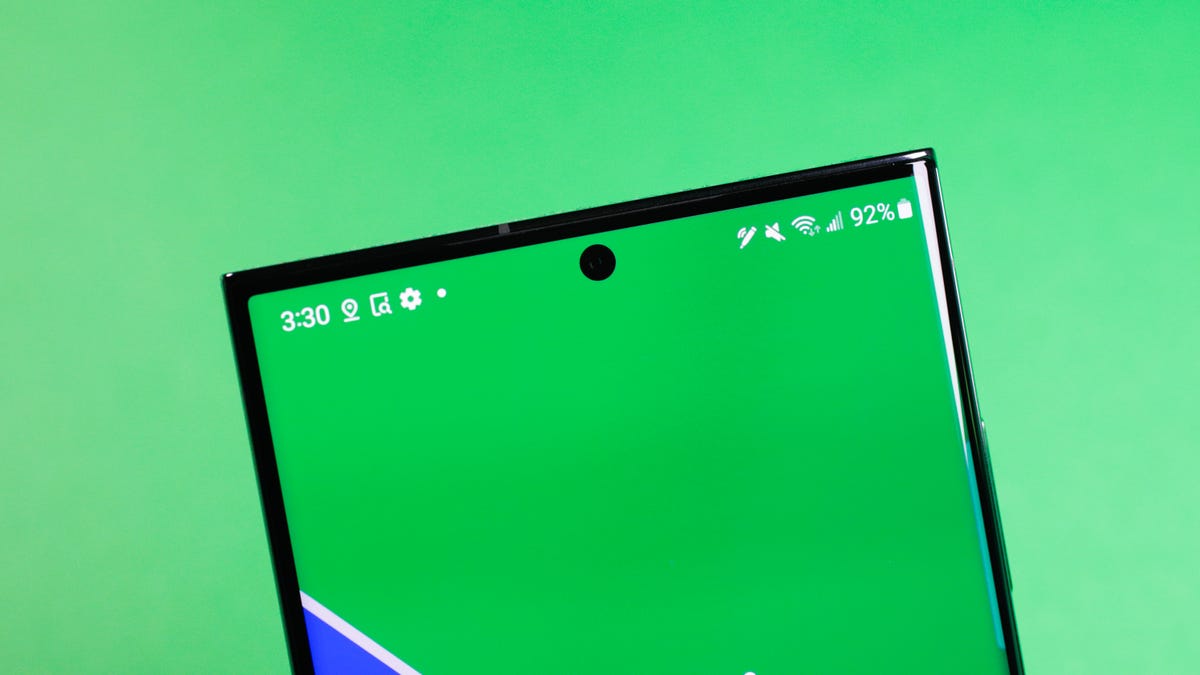

The battery that keeps going.
James Martin/CNETEven though the Ultra has a bigger battery, Apple is actually able to crank out more efficiency from its batteries thanks to iOS and its own A-series chips. Meanwhile, Android has to work with a variety of devices running different processors, so it becomes more important to have that bigger battery.
Specs and logistics aside, I’m amazed by the Ultra’s battery life, as was CNET’s mobile reporter Lisa Eadicicco when she reviewed the Ultra.
The S23 Ultra’s 200-megapixel camera
Camera quality is the most important aspect of any phone for me. I take a lot of pictures and videos for work and social media, including for my very niche tea account on Instagram. The camera on the Galaxy phones kept me in the Samsung family for a decade, so I was eager to compare the S23 Ultra’s cameras to the iPhone 14 Pro’s.
What I noticed right away is how much more saturated photos on the Ultra are. In most cases, that saturation adds a nice color boost to images and makes them stand out more. Pictures of my colorful teacups look even more vibrant on the Ultra. Sometimes, that saturation can be a bit overwhelming and makes photos look unnatural, as if there’s a filter on them. But other times, it makes colors and subjects stand out, in a good way.


The Galaxy S23 Ultra’s 200-megapixel sensor brings out details and color in this decorative teacup.
Abrar Al-Heeti/CNETThe 200-megapixel sensor on the Ultra punches up color and detail even more. A picture I took of a decorative teacup emphasizes the intricate floral design and gold trim and another image of a Klay Thompson mural shows vivid blues and yellows.
Not all moments are made for a 200-megapixel sensor, though. In another image taken outdoors, the sensor removed a few too many highlights, so it was harder to see detail and make sense of what’s going on.
Overall, I appreciate the softness and brightness of photos on the Ultra. Shadows on the iPhone are often a bit too harsh and give some images a darker overtone. An image of the sky on the Ultra will look nice and bright, while on the iPhone, there might be distracting shadows under clouds. The Ultra’s softness and brightness also make for more flattering selfies. You can adjust the iPhone’s camera settings and play around with things like contrast, tone and color temperature, and even mimic photography styles on the Galaxy (and vice versa), but I do wish the iPhone just automatically adjusted for things like shadows a little better.
The camera feature that surprised me most was Portrait mode. I think of Portrait mode on the iPhone as the gold standard. The subject is usually in perfect focus, the background is smoothly blurred and the colors are more natural looking. But I noticed there’s something the Ultra did better than my iPhone. I took a picture of my friend while she had sunglasses on top of her head, and the iPhone struggled to keep the bridge and sides of the glasses in focus, while the Ultra didn’t. It’s that small detail that shows how far Portrait mode has come on Galaxy phones. I still prefer the look of iPhone portraits because of the lower saturation, and you can catch a bit more detail in the background, which is nice.


The picture on the left was taken with Portrait mode on the iPhone 14 Pro, while the one on the right was taken with the Galaxy S23 Ultra. If you look closely, you’ll nice the iPhone blurs the bridge and sides of the glasses, while the Ultra doesn’t.
Abrar Al-Heeti/CNETDoes the Galaxy S23 Ultra beat the iPhone at video?
Given the popularity of TikTok and Instagram Reels right now, video is a huge focus for both Apple and Samsung — and also important for folks like me who take a lot of videos. Since switching to the iPhone, I’ve seen an uptick in the quality of my videos. The colors are more natural and the images sharper. Cinematic mode makes subjects pop and lends a more professional look to my content. Samsung has its own Cinematic mode equivalent, called Portrait video. It also does a great job of blurring the background, but objects and people look a little less defined than they do on iPhone.
One area where the Ultra is a clear winner is with video stabilization. Even walking down the stairs, the footage is incredibly smooth, as if you’re using a gimbal. With the iPhone, you can still sense each step being taken, and there’s a lot more movement.
The S23 Ultra’s design vs. iPhone 14 Pro
Let’s be honest: the iPhone’s camera bumps are ridiculous. The Ultra is a breath of fresh air because the cameras don’t stick out as much, so it wobbles less when you set it down.
The S Pen on the Ultra is a fun extra, though I never found myself reaching for it. There’s not much I want to write by hand, and I can just tap the screen for pretty much all functions. Still, I’m glad the legacy of the retired Galaxy Note series lives on.
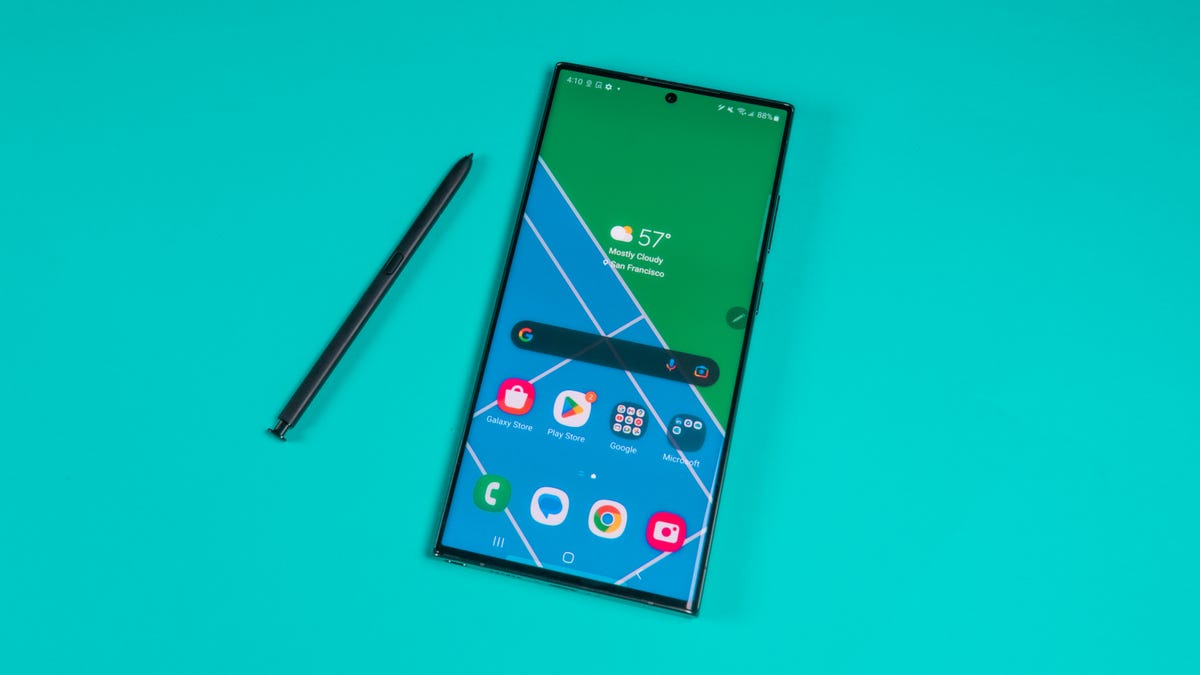

The S Pen returns on the Galaxy S23 Ultra.
James Martin/CNETThe in-screen fingerprint reader was a favorite feature of mine on my Galaxy phones, and it’s nice to have that option again while using the Ultra. I missed it when I first switched to the iPhone, but Face ID is solid enough that I quickly got over it. Unlocking both phones has been seamless.
The Galaxy S23 Ultra’s price is the same as the iPhone
The S23 Ultra is $1,200 for 256 GB of storage and is priced similarly to the iPhone 14 Pro Max with the same amount of storage. The smaller iPhone 14 Pro is $1,100 for 256GB. Whether you’re a Galaxy fan or an iPhone lover, $1,200 is a lot. But in this case, you get what you pay for.
Galaxy S23 Ultra vs. iPhone 14 Pro final thoughts


Those camera bumps on the iPhone 14 Pro feel a little excessive.
John Kim/CNETIt’s been fun to revisit a world I’ve abandoned and compare the iPhone I have now to the one I could’ve had if I’d stayed in the Galaxy family. While there are aspects to the S23 Ultra that I appreciate, like brighter and more colorful images, better video stabilization and incredible battery life, there are advantages to having an iPhone that go beyond specs that’ll likely keep me in the Apple ecosystem for a while. Features like Airdrop and iMessage have made the user experience more seamless. And I don’t know if I could give up the iPhone’s video quality for anything else.
Still, I know that if I want to take a picture that makes people’s jaws drop, I’ll likely reach for the S23 Ultra. Then I’ll wait for the look of shock when I tell them it wasn’t taken with an iPhone.
Check out the video above to see more of my experience trying out these two phones, along with some side-by-side examples of photos and videos taken on each.
Technologies
Give the Gift of Great Sound With Sennheiser Headphones at a 60% Black Friday Discount
The Sennheiser Momentum 4 headphones are now down to a record low price of $179 this Black Friday.

Spending this Black Friday shopping for a holiday gift for an audiophile? With tons of items on sale, there are plenty to chose from. Sennheiser is behind some of the best wireless headphones you can buy, but its headphones can be prohibitively costly.
But for two days only, Woot is running a Black Friday deal that brings the Sennheiser Momentum 4 headphones down to $179 from the original $450 price. The Sennheiser Momentum 4 headphones are for audiophiles who want great quality and comfort. You have to be quick, as this deal ends on Nov. 30, or sooner if supplies run out.
Sennheiser Signature Sound gives you rich, balanced audio, and the companion Smart Control app lets you fine-tune the sound to your liking. Adaptive noise cancellation keeps outside distractions at bay, making these headphones great for work, commuting or just zoning out at home. The battery lasts up to 60 hours at moderate volume, and the voice-calling quality is solid, so you can rely on them for everyday use.
Hey, did you know? CNET Deals texts are free, easy and save you money.
If this style of headphones isn’t your cup of tea, then maybe a pair of the best wireless earbuds will be better suited to your needs. If you’re shopping on a budget, check out our roundups of the best gifts under $100, $50 and $25 to see more great gift-giving ideas.
HEADPHONE DEALS OF THE WEEK
-
$248 (save $152)
-
$170 (save $181)
-
$199 (save $150)
Why this deal matters
This deal surely won’t last. Sennheiser has made a name for itself as one of the best in the audio business, and that’s clear with the Momentum 4 wireless headphones. They offer adaptive noise cancellation, a Bluetooth connection and up to 60 hours of playback. When it comes to comfort and quality, it doesn’t get much better, especially with a discount like this.
Join Our Daily Deals Text Group!
Get hand-picked deals from CNET shopping experts straight to your phone.
By signing up, you confirm you are 16+ and agree to receive recurring marketing messages at the phone number provided. Consent is not a condition of purchase. Reply STOP to unsubscribe. Msg & data rates may apply. View our Privacy Policy and Terms of Use.
Technologies
Samsung’s Galaxy Watch 8 Is Now Just $250 in Multiple Black Friday Sales
The Samsung Galaxy Watch 8 is an even better value with this $100 discount.
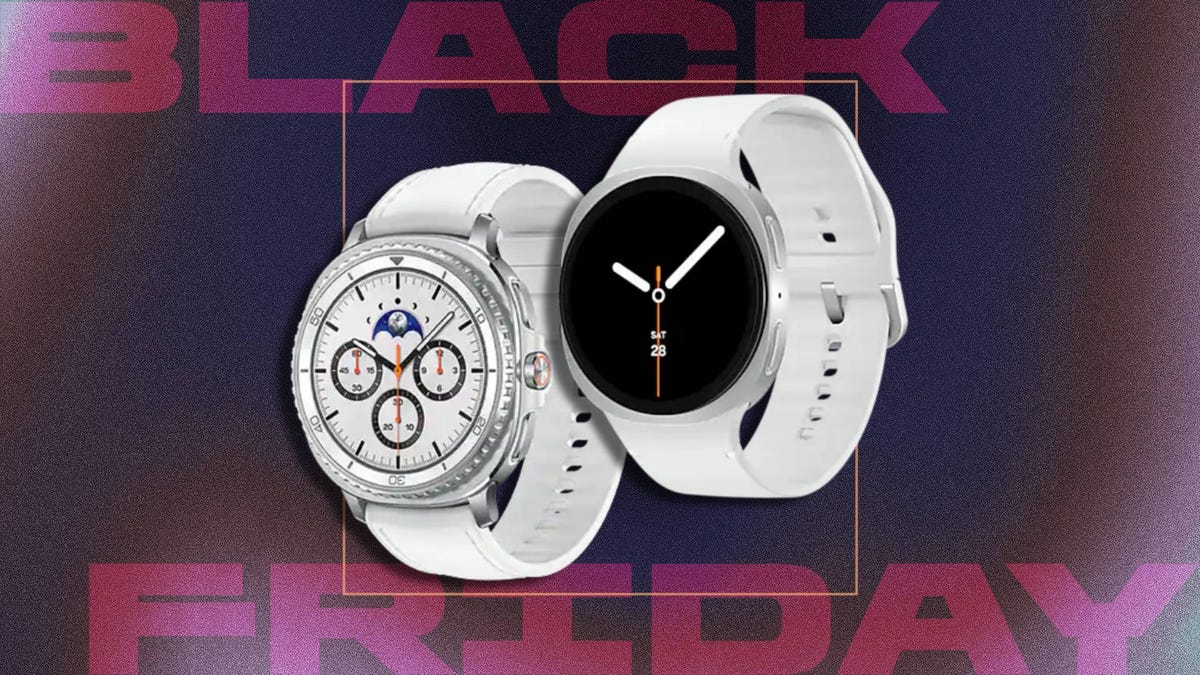
The holiday season is here, and while your fitness goals might not be at the front of your mind right now, January is just around the corner. That means resolutions are upon us, so what better time than now to pick up a new smartwatch? You can get your hands on a new Samsung Galaxy Watch 8 while it’s available for a huge $100 off for Black Friday.
Amazon and Best Buy are both selling the Galaxy Watch 8 at the same $250 price. We can’t promise either deal will be around for long.
Samsung’s latest smartwatch packs serious hardware upgrades over it predecessor. It has a vibrant 46mm AMOLED display that shines up to 3,000 nits, along with 2GB of RAM, 64GB of storage, built-in GPS and advanced fitness tools, including sleep coaching and vascular load monitoring. It’s waterproof up to 50 meters and lasts up to 30 hours on a single charge.
CNET expert Vanessa Hand Orellana praised its refined design, detailed health insights and Gemini AI support, noting that it «has nearly every feature I could hope for.» Just remember, some tools work best when paired with the Samsung Galaxy phone.
SMARTWATCH DEALS OF THE WEEK
-
$339 (save $60)
-
$280 (save $70)
-
$300 (save $50)
-
$150 (save $100)
-
$49 (save $30)
Why this deal matters
The Samsung Galaxy Watch 8 packs serious upgrades for the price. With advanced fitness tools, sleep coaching and daily energy tracking, it’s one of the most feature‑rich smartwatches this year. The $250 price represents a new low for the model and includes a 90-day warranty. But with limited stock, it’s a deal worth grabbing quickly.
Join Our Daily Deals Text Group!
Get hand-picked deals from CNET shopping experts straight to your phone.
By signing up, you confirm you are 16+ and agree to receive recurring marketing messages at the phone number provided. Consent is not a condition of purchase. Reply STOP to unsubscribe. Msg & data rates may apply. View our Privacy Policy and Terms of Use.
Technologies
The Black Friday Gaming Deals Are Here. Shop Now and Save Big on PlayStation, Xbox and Alienware
-

 Technologies3 года ago
Technologies3 года agoTech Companies Need to Be Held Accountable for Security, Experts Say
-

 Technologies3 года ago
Technologies3 года agoBest Handheld Game Console in 2023
-

 Technologies3 года ago
Technologies3 года agoTighten Up Your VR Game With the Best Head Straps for Quest 2
-

 Technologies4 года ago
Technologies4 года agoBlack Friday 2021: The best deals on TVs, headphones, kitchenware, and more
-

 Technologies4 года ago
Technologies4 года agoVerum, Wickr and Threema: next generation secured messengers
-

 Technologies4 года ago
Technologies4 года agoGoogle to require vaccinations as Silicon Valley rethinks return-to-office policies
-

 Technologies4 года ago
Technologies4 года agoOlivia Harlan Dekker for Verum Messenger
-

 Technologies4 года ago
Technologies4 года agoiPhone 13 event: How to watch Apple’s big announcement tomorrow





